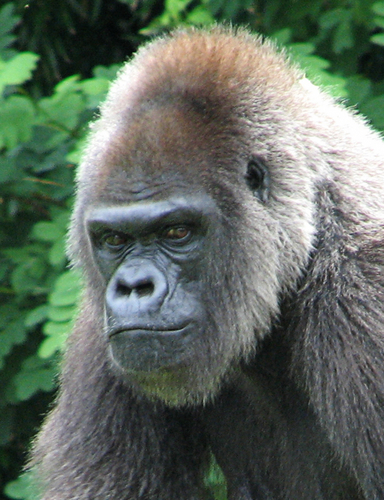Eng. 3100: Advanced Expository Writing
University of Missouri-St. Louis
C. Brown
Writing Assignment:
After you have read the first half of the book, watch this clip. Then go to the Ishmael website. Each group should select one Daniel Quinn essay or interview to read. Then use our class Discussion Board (on MyGateway) to share your thoughts on both the film clip and Quinn's message. Each group member is responsible for starting a thread and responding to at least two other persons' threads in your group.
Ishmael Paper: The Stuff Project
It is a given fact that human beings must consume natural resources to survive. Everyone needs a modicum of food, clothing and shelter, as well as some level of those sorts of personal possessions by which we identify ourselves and that contribute to “quality of life” and the positive make-up of differing cultures around the world. At the same time, there is no denying that such human consumption has very real implications for the natural environment, with some cultures contributing more than others to the overall ecological impact.
At the individual level, each student will conduct a series of activities aimed at assessing his or her consumption patterns and values, and by extension, those individuals close to you. Collectively we should be able to determine some interesting consumption patterns.
The Stuff Project will be broken down as follows:
Part A
Make an inventory of the “stuff” in one of your rooms. Now answer the following questions about your inventory:
1) How much of this “stuff” was there before you arrived, and what did you bring?
2) What is the estimated value of your inventory?
3) What does the stuff you currently live with say about the way you live your life?
4) Suppose all your inanimate possessions were about to be destroyed by a natural disaster and you could only save three things? What would you save and why?
Part B
Section 1—make a list of the five most recent (separate transactions) consumer purchases you have made. Indicate for each transaction what you bought, where and when you bought it, and most important, why you made the purchase.
Section 2—collect the same data as in Section 1 for two other people in your life. Write a paragraph that assesses and analyzes your and your peers’ consumption patterns as revealed by these sets of purchases.
Part C
Choose one of these purchased items and analyze it in writing in response to the following questions:
1. Who makes the product (be sure to name it) and where?
2. What resources were used to create the product?
3. Are the resources renewable or nonrenewable?
4. Is it likely that the workers who produce the product also own the product?
5. Who buys the product and what do the buyers have to be willing to do in order to buy it (work more, save less, buy on credit?)
6. If appropriate, is the product easy or difficult to repair?
7. What happens to the product at the end of its life?
8. What is the environmental impact of the product?
Part D
Reflect on the “ecological footprint” you are making on the environment. What are the ecological implications of those patterns? What solutions or recommendations for change can you propose, both personally and collectively, for what you see as the consumption-environment issues before you as an individual, for the UMSL community, and more broadly, for American society as a whole? Please incorporate passages from Daniel Quinn's Ishmael to make your insights and arguments.
With Gorilla gone, will there be hope for Man? With Man gone, will there be hope for Gorilla?
--Daniel Quinn

Blessed are those who do whatever they can wherever they are, for no one is devoid of resources or opportunities.
--Daniel Quinn

| return |